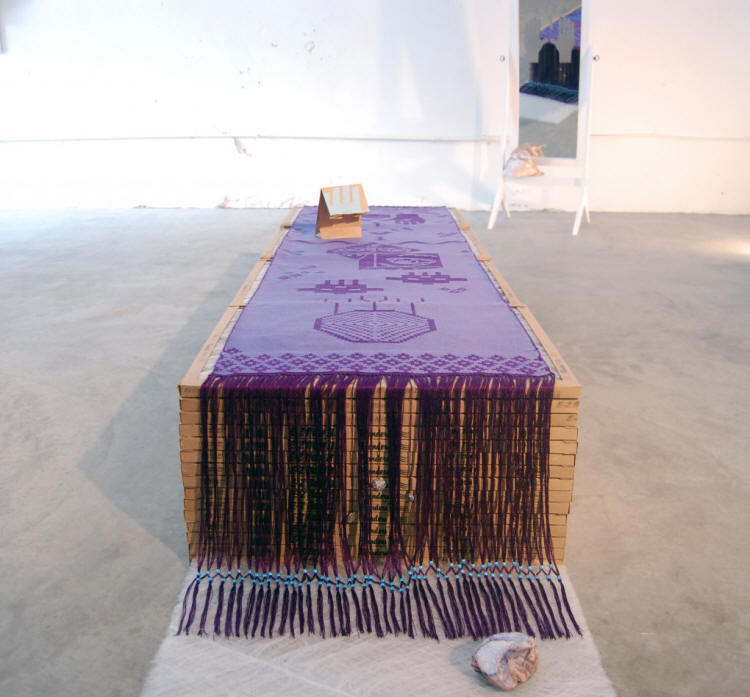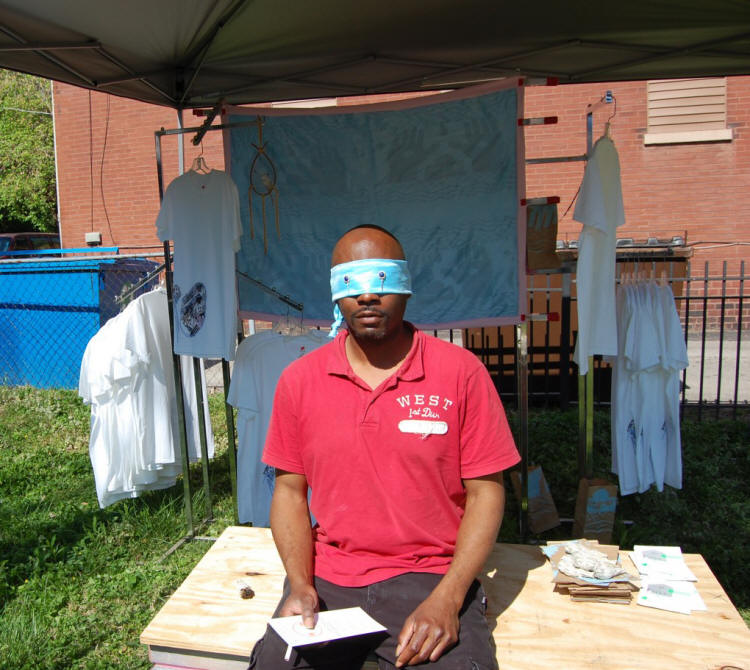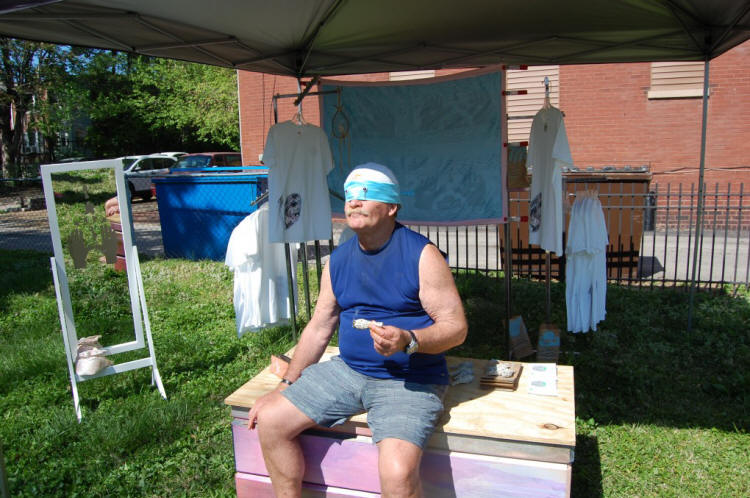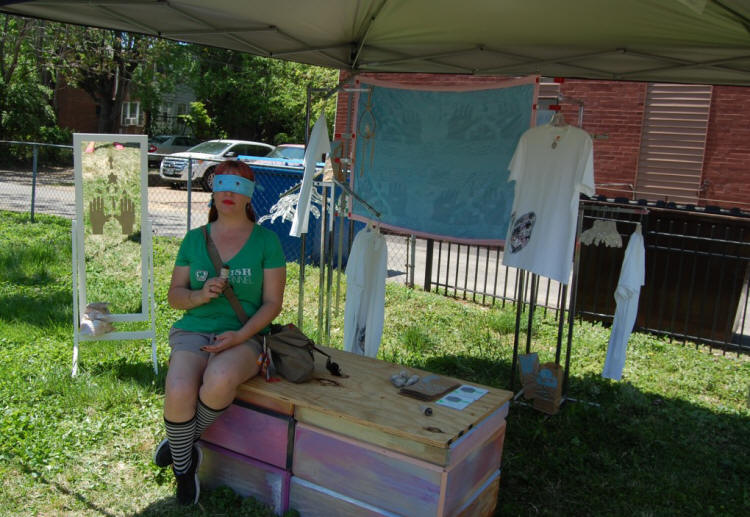|
|
| home | exhibitions | interviews | features | profiles | webprojects | archive |
|
Spirit Line
Byzantia Harlow's 'Spirit Line' textile was installed in the Newlyn Gallery as part of 'Hummadruz', curated by Field Notes.
Byzantia Harlow's work investigates the intersection between true experience, constructed encounter and embellished recollection. Harlow’s long-term interest in alternative societies, groups exploring the spiritual or supernatural , and alternative healing practices inform her current work. For Harlow every determination of an event is the balance between cynicism, or acceptance of the mystical. Harlow has Native American, Bermudian, Italian and British heritage. Spirit Line, the work included in Hummadruz, was produced in 2016 during a residency at The Luminary, St Louis for which she received ACE funding, through the Artists' International Development Fund. This opportunity to visit the Cahokia Mounds and meet Native American artisans allowed a reconnection with that part of her heritage. Her experience in St Louis juxtaposed deep spirituality with the commodification and/or appropriation of rituals.One premise of the project was that the artwork could contain the exposure to new ideas and rituals whose impact produces a beneficial response in the participant which cannot be attributed to the exact nature of the project, but the power of which is bound into belief. Spirit Line is a term specific to Native American weavings; the belief that the single thread of yarn connecting the centre of a rug with an edge purportedly allows the weaver’s spirit to not be trapped in the weaving, so enabling them to create other works. The textile in this exhibition was a collaboration between Harlow and weaver Michael Jennrich, who spent many years being taught by traditional Native weavers after being invited to weave by a ‘Spider Woman’ guide. The textile features significant dream imagery as recounted by members of the public to Harlow. The woven fringe also incorporates Native American hand- embossed silver and beading (detail below). The weaving was the central expression of a larger project of the same name. The first person Harlow spoke to in St Louis recounted a dream of 'divine eyes'. The power of the image compelled him to set up his not-for-profit bakery, ‘Bridge Bread’ which exclusively employs homeless people. His dream is woven into the eyes of the tapestry. A Native American woman recounted her belief in the importance of water in her youthful dreams, which brought luck to her tribe. She had had no dreams of water for years; a drought in her dreams she believed to be a factor in her life taking a turn for the worse. Drawing on rituals of meditative sand painting (where a symbol of a problem is created and blown away to resolve it) Harlow created hand crushed lapis lazuli waves on a wall which were sanded back and removed at the end of the exhibition in the hope the woman would dream of water again. The wave symbols in the tapestry weave in the good dreams of the woman. The pattern of the textile was later printed onto t-shirts, and these were swapped with members of the community at a local market in return for their participation in a ritual and telling a dream (photos below). These exchanges were recorded. During this event people from a nearby homeless shelter came to get t-shirts and speak to Harlow. One of them recounted a dream of divine starry eyes and Harlow introduced him to the owner of Bridge Bread where he was given a trial of work. This is an example of how the rituals in the project took on their own life and with positive effect on the community. A new hanging support cast from forked branches taken from a sacred forest was created by Harlow to display the weaving for 'Hummadruz'. 18/3/18
20/3/18
|
|
|







